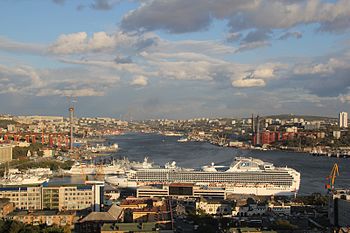During the colonial era, the city was famous for being the namesake of Makassar oil, which it exported in great quantity. Makassar ebony is a warm black hue, streaked with tan or brown tones, and highly prized for use in making fine cabinetry and veneers.
 |
| Aerial View of Makassar City in Indonesia |
Nowadays, as the largest city in Sulawesi Island and Eastern Indonesia, the city's economy depends highly on service sectors with approximately 70% from total share. Restaurant and hotel service are the largest contributor (29.14%), followed by transportation and communication (14.86%), trading (14.86), finance (10.58%). Industry follows behind service with 21.34%
Makassar has a public transportation system called 'pete-pete'. A pete-pete (known elsewhere in Indonesia as angkot) is a mini-bus that has been modified to carry passengers. The route of Makassar's pete-petes is denoted by the letter on the windshield. Makassar is famous for their "becak" (pedicab) which is smaller than the "becak" in the island of Java. In Makassar, people who drive pedicab are called Daeng. The city airport is Hasanuddin International Airport which is actually located outside the Makassar city administration area. It is formally located in the regency of Maros. In addition to "becak" and "pete-pete", the city has government-run bus system, and taxis.
The inter-city railway in the areas of Makassar, Maros, Sungguminasa, and Takalar (Mamminasata) will be realised in 2015




















